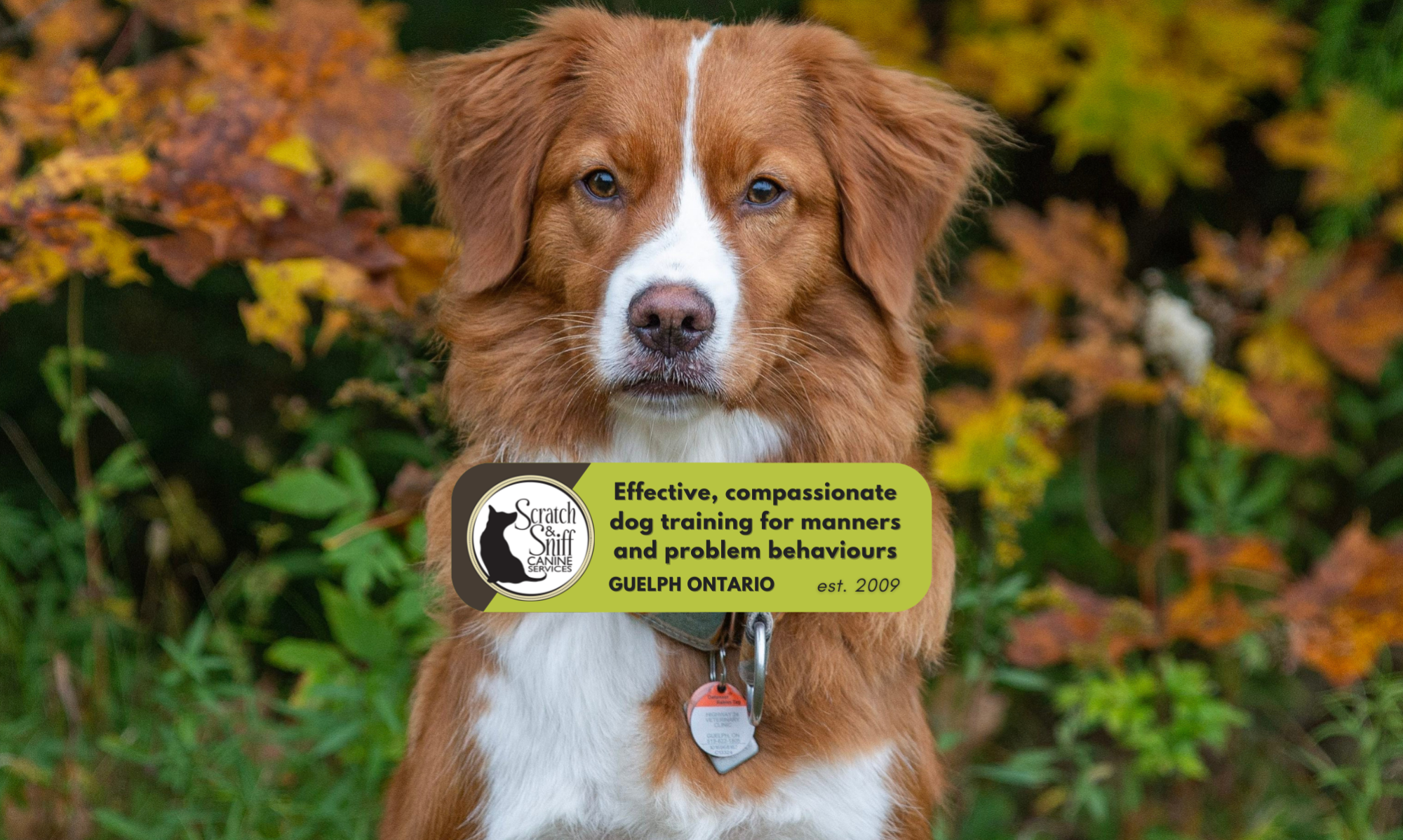If dogs could request one thing of us people that would assist in preventing, managing, and changing most behaviour problems, they would say “gimme some space!”
Last week, I saw two people who did not know each other waiting at a traffic light with their dogs. The dachshund was bouncing around barking at a doodle who was straining backwards and giving a fine demonstration of calming signals. Neither dog wanted to be in such close proximity, each had a different strategy of expressing that discomfort. Neither owner appeared to heed their dogs. Later, my partner and Arlo were by a man with a blind dog on a flexi-leash. He did not ask how Arlo felt about being approached while on leash, just walked right up and said “I have to tell her when there’s another dog around, she can’t see.” Which means she also can’t see what the dog is telling her. During puppy class, I am continuously speaking with owners about allowing their pups to stay out of the action if they need to, rather than dragging them towards the other pups. Crowding at the dog park gate is seemingly inevitable, creating a socially tense situation when new dogs are immediately mixed-in with a bored and rowdy crew in a small space. It’s not unusual to a see a fight breakout in a park when a new dog collides with a large number of milling dogs.
The best skill a dog can have is to avoid social interaction when they are uncomfortable; likewise, the best skill an owner can have is the ability to recognize this. A lot of problems can be prevented if we people could learn to recognize indications of stress and allow and encourage our dogs to disengage from an uncomfortable situation. Unfortunately, as I’ve seen in situations such as those above, we can unknowingly strip our dogs of this strategy. If creating their own space is not an option, it will fall out of their repertoire of “How to Avoid Uncomfortable Social Situations.” The next best strategy for coping with unwanted social pressure… going on the offensive. While not all dogs who are forced into these situations will resort to offensive behaviours (barking and lunging, for instance), many will amp up their calming and stress signals to deafening levels or fall into a state of learned helplessness. This inability to disengage and monitor its own space is at the root of many problems, from on-leash reactivity to proximity sensitivity.
I have been doing a lot of reading and watching of materials on Behaviour Adjustment Training (BAT). I love this method because it so thoroughly incorporates the idea that relief from social pressure, primarily via increase in distance from the trigger, is highly valued by dogs. The basis of BAT for aggressive behaviours is fairly simple: expose the dog to the trigger at a low enough intensity to provoke mild indications of stress (calming signals), and reinforce those behaviors by subsequently decreasing the intensity of the trigger (usually by moving the student dog away form it). For example, if a dog’s usual reaction is to bark and lunge at a person, a training set up would involve walking the dog towards the person until they acknowledge them (usually by staring), waiting for a socially appropriate cut-off signal (any calming signal, such as looking away, loosening of the joints, etc), at which point the behaviour is marked and the dog is moved away to “safety”. Barking and lunging is replaced by socially appropriate behaviours. Both techniques are distance-increasing behaviours, but if properly managed the more energy-intensive aggressive display will be dropped in favour of the calming signals. While this technique utilizes negative reinforcement, it is a fairly low-stress technique because the dog should always remain under-threshold (NOT reacting with an aggressive display). I think the brilliant thing about BAT is the necessity of recognizing how important space is for a dog, particularly for a reactive or fearful dog. It is what makes this protocol effective and being so ingrained it is a difficult aspect for clients to overlook.
Next time your dog is interacting with another dog or a person, ask yourself, is she enjoying or simply tolerating the interaction? If two dogs are playing, is the one being chased playing or really just running away? If you momentarily restrain the chaser, does the chasee come back to initiate play or does she shake off and go to do something else? If your dog is reactive, find yourself a good trainer who understands how to manage your dogs environment so as to avoid getting her in to a situation that she does not have the skills to deal with. Educate yourself about calming signals and how to recognize stress and watch for instances when your dog is attempting to disengage from uncomfortable social interactions. Your dog will thank you!
How to Recognize a Stressed Dog a Youtube clip by Jean Donaldson
Short Guide to Body Language a Youtube clip by Zoom Room Agility
Calming Signals Book/DVD by Turid Rugaas
